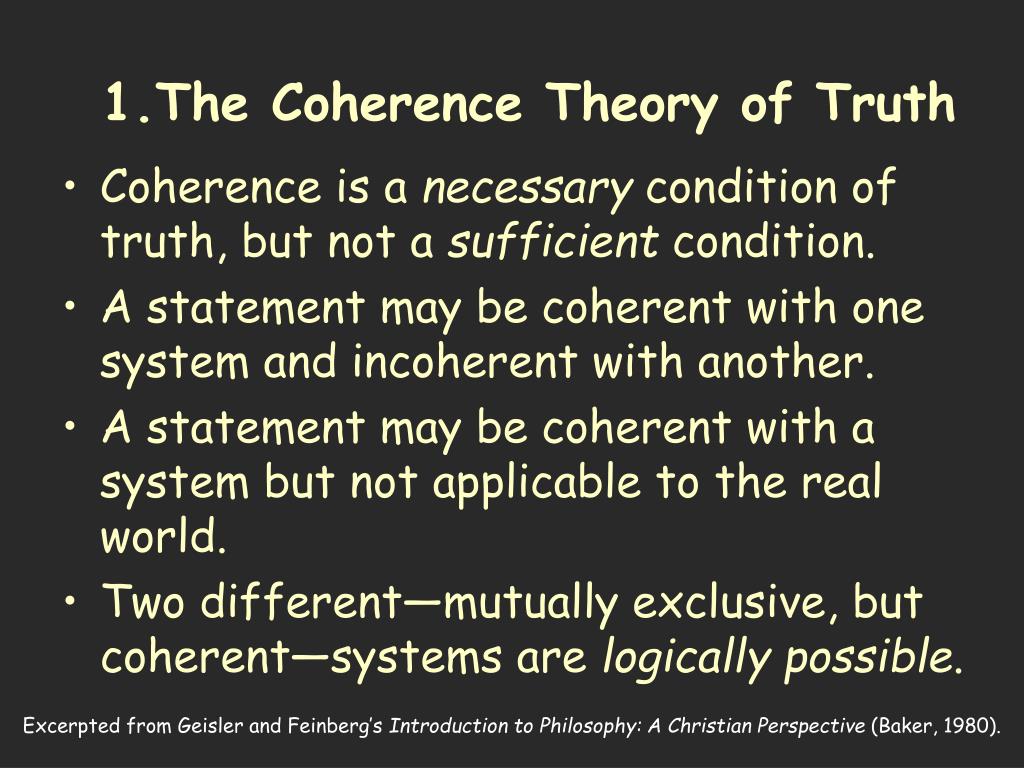

But master debaters and good writers alike are able to bend this to their advantage. The coherence theory of truth has its place - when you are writing, for instance, it is table stakes to have your arguments flow logically from premises to conclusions. Both correspondence (“This does not line up with my experiences!”) and coherence (“This is not a watertight argument!”) are the two most common standards for truth I’ve seen used in the wild. Whenever you see a commenter pointing out ‘oh, that’s a fallacious argument’, they are drawing on the coherence theory in order to reject an argument or claim out of hand. I think coherence is what many thinkers fall back on, after correspondence. This is where the notion of ‘fallacy’ comes from - if you make a fallacious argument, you are violating the rules of logic, and therefore your argument may be rejected as false. The coherence theory of truth is the idea that arguments must make sense - that is, arguments must flow logically from premises and intermediate propositions. The more counter-examples you are able to generate, the less highly you should think of the author’s thinking, and the less credible you should find the entire piece. One way to do this is to generate counter-examples while reading - if an author makes a point, synthesized from his/ her experiences, then you should attempt to generate as many counter-examples as possible from your experiences, or from real-world scenarios that you've read about. If a friend claims that “all men are terrible at housework”, for example, you would immediately evaluate that claim against all the men you’ve met in your life.

The most obvious application of this theory is in science: whenever we conduct an experiment to verify (or disprove) a hypothesis, we are using the correspondence theory, for we assume that what we observe in the experiment is what is true.īut correspondence isn't just something that exists in science, far away from daily life we draw on this theory, for instance, whenever we evaluate a claim by checking against our experiences. The correspondence theory of truth says that what is true is what matches observable reality.
COHERENCE THEORY OF TRUTH EXAMPLE HOW TO
It might not be clear how to make them actionable. So far, these theories of truth might seem stereotyped to you. The pragmatic theory of truth - that what is true is what is useful to you, or beneficial for you.The consensus theory of truth - that what is true is what everyone agrees to be true.The coherence theory of truth - that claims are true if they follow logically and coherently from a set of axioms (or intermediate propositions).The correspondence theory of truth - that whatever corresponds to observable reality is true.Evaluating a claim - any claim - demands that you use some sort of standard of truth in your head it helps a great deal if you know there are really only four approaches that are worth talking about. Why are these four theories useful? They are useful because they give us a cheat sheet for clear and critical thinking. Of course, a field with a name like ‘epistemology’ sounds impractical, but in reality we reach for these theories in our day-to-day lives, in order to determine what is true and what is fake we do this even if we don’t know their names. It asks: “how do we know that something is true?” and “what bar for truth should we use to evaluate claims?” In epistemology, there are four ‘classical’ or ‘common’ theories of truth.

Epistemology is the part of philosophy concerned with the forms of truth.


 0 kommentar(er)
0 kommentar(er)
